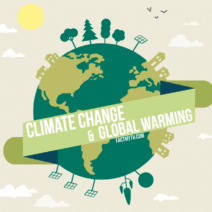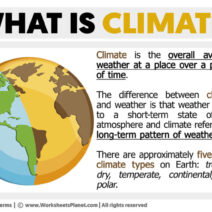Internal variability in climate change refers to the natural fluctuations in the climate system that can occur independently of external influences such as human activity. These variations can manifest over various timescales—from seasons to decades—and are an important component of understanding the broader context of climate change. This internal variability can affect weather patterns, temperature distributions, and precipitation rates, all of which significantly impact ecosystems, agriculture, and water resources.
One of the most compelling aspects of internal climate variability is its intricate relationship with long-term climate trends. It contrasts with external drivers, such as greenhouse gas emissions, deforestation, or volcanic eruptions, which are directly attributable to human actions. By comprehending both internal variability and external forcings, we can more completely grasp the complexities of climate change and develop effective strategies for mitigation and adaptation.
The climate system consists of various components, including the atmosphere, oceans, ice sheets, and land surfaces. Each of these components interacts with one another, leading to a diverse array of phenomena. For instance, ocean currents can have profound impacts on climate by redistributing heat around the planet. In this context, internal variability can arise from these interactions, often influenced by the stochastic processes occurring in the climate system.
One significant manifestation of internal variability is the El Niño-Southern Oscillation (ENSO), a periodic variation in sea surface temperatures and atmospheric pressure in the equatorial Pacific Ocean. El Niño events, characterized by unusually warm ocean waters, typically occur every 2 to 7 years and can lead to significant shifts in global weather patterns. Conversely, La Niña events bring about cooler sea surface temperatures, contributing to their own unique climatic impacts. These oscillations exemplify how internal variability can introduce significant unpredictability into climate systems, often resulting in extreme weather phenomena such as droughts, floods, and hurricanes.
Another noteworthy example of internal variability is the North Atlantic Oscillation (NAO). This phenomenon involves fluctuations in atmospheric pressure patterns over the North Atlantic Ocean, influencing the strength and position of the polar jet stream. The NAO has a significant impact on winter weather in North America and Europe, affecting everything from the strength of winter storms to the allocation of warm air in mid-latitudes. These variations can drastically alter precipitation patterns, emphasizing the importance of understanding internal variability in seasonal weather forecasting and climate resilience strategies.
While internal variability is an integral aspect of the climate system, its effects are often overshadowed by the urgency surrounding human-induced climate change. This nuance deserves careful consideration. Internal variability does not negate the ramifications of human activities; rather, it complicates the climate narrative. For instance, the effects of climate change—such as rising global temperatures and changing precipitation patterns—can interact with these internal variations, creating a complex web of cause and effect. This interplay can lead to phenomena that are not only unpredictable but, at times, counterintuitive.
It is crucial to recognize that climate models, which scientists use to predict future climate scenarios, incorporate both internal variability and external influences. These models aim to simulate the climate system’s behavior over time, taking into account the myriad interactions between its various components. However, due to the chaotic nature of climate interactions, predicting the immediate impacts of internal variability remains a formidable challenge. This unpredictability has profound implications for policymakers aiming to develop robust climate action initiatives.
The fascination surrounding internal variability emerges from the challenge it poses in the face of climate science advancements. Researchers are continually refining models to better understand these internal processes and their interactions with external influences. Nevertheless, the complexity of the climate system means that internal variability will likely remain a source of study and intrigue. It keeps scientists and researchers invested in unraveling the details of atmospheric and oceanic interactions that contribute to our evolving climate.
In summary, internal variability represents a critical component of the climate system, affecting local and global weather patterns, long-term climate trends, and ecological balances. The dynamic interactions between oceanic and atmospheric components, as demonstrated by phenomena like ENSO and the NAO, highlight the significance of internal variability in shaping our climate. While modern climate science continues to strive towards disentangling the complexities of internal variability from human-induced changes, acknowledging its role enriches our understanding of climate mechanisms and enhances our capacity to respond to climate challenges effectively.
Ultimately, the interplay between internal variability and human-induced climate change is a dimension that must not be overlooked. It emphasizes the necessity for ongoing research and data collection to inform our policies and actions. As the climate continues to change, recognizing and adapting to these natural fluctuations will be key to fostering resilience in communities and ecosystems that are increasingly vulnerable to climate impacts.


